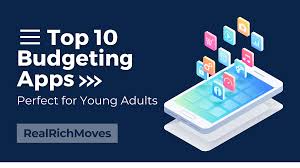Table of Contents
Balancing a burgeoning career with sound financial habits can feel like a full-time endeavor. Young professionals face the task of managing daily expenses, paying down student loans, and saving for future milestones all at once. A well-designed personal finance app can provide clarity and structure. Modern platforms offer automated expense tracking, goal-based savings tools, and even entry-level investment options. Yet, not every app is created equal. To find a solution that truly supports both short-term needs and long-term objectives, it is essential to understand which features will drive consistent engagement, reinforce positive money habits, and scale alongside evolving financial goals.
Clear and Intuitive Design
A finance app should simplify money management rather than complicate it. An interface cluttered with tiny icons, buried menus, or obscure labels will discourage regular use. Top apps feature a single dashboard that highlights key metrics, such as monthly spending versus budget, income received, and progress toward savings targets. Visual charts, progress bars, and color coding help users grasp their financial picture instantly. Navigation menus are limited to essential functions such as transaction review, fund transfers, and goal creation. Common tasks, such as categorizing transactions or transferring funds, require only two or three taps. By reducing friction, an intuitive design fosters daily engagement and helps young professionals build consistent habits without feeling overwhelmed.
Real Life Expense Tracking
Budgeting tools must accurately mirror real spending habits in order to be effective. Leading apps connect directly to checking and savings accounts, credit cards, and popular payment services to import transactions automatically throughout the day. There remains an option to manually enter cash purchases or split shared expenses, which ensures that every dollar is accounted for. Automatic categorization assigns spending to groups like groceries, dining out, utilities, and subscriptions. Custom labels let users track specialized categories such as work-from-home supplies, professional development expenses, or fitness classes. Detailed monthly and year-to-date reports reveal trends that might otherwise go unnoticed. A seamless, near-real-time feed gives young professionals the ability to adjust their spending before they exceed their budget, rather than discovering overspending weeks after the fact.
Goal-Oriented Savings Tools
Saving money becomes more achievable when goals are clearly defined and progress is visible. Most apps allow users to set multiple targets such as an emergency fund, a travel budget, or a down payment on a home. Each goal is accompanied by a visual indicator showing dollars saved versus dollars remaining. Scheduled transfers automatically move funds from checking to dedicated savings accounts or virtual “buckets” based on user-defined rules. Some platforms gamify contributions by awarding badges or marking completion streaks for consistent deposits. Alerts notify users if they fall behind schedule, so they can adjust subsequent transfers to stay on track. These goal-oriented features help turn abstract intentions into measurable achievements and reinforce positive behaviors over time.
Investment and Wealth-Building Features
As income grows, young professionals often look to build wealth beyond a traditional savings account. Robust personal finance apps incorporate beginner-friendly investment options without requiring steep learning curves. Automated portfolios offer low-cost diversified ETFs based on risk tolerance and time horizon. Round-up features convert spare change from everyday purchases into fractional shares of mutual funds or stocks. An educational library provides short articles or videos on foundational topics such as asset allocation, tax-advantaged accounts, and market cycles. More advanced users may access individual stock purchases, bonds, or even currency markets once they master the basics. For example, a platform can offer Forex trading modules that explain how currency pairs behave and how exchange rate fluctuations affect global portfolios. Having a spectrum of investment tools ensures that the app grows with the user’s financial sophistication.
Security and Trust as Non-Negotiables
Personal finance apps handle sensitive data and real money transfers, so strong security measures are essential. Users should verify that the provider uses bank-level encryption, secure servers, and multifactor authentication to safeguard login credentials. Privacy policies must explain how transaction data is used, whether for personalized spending insights or aggregated analytics. Real-time notifications for logins from new devices and alerts for unusual transactions add an extra layer of protection. Regular third-party security audits and compliance with industry standards such as SOC 2 or ISO 27001 signal a commitment to safeguarding user information. A transparent approach to data permissions and robust incident response protocols ensure that young professionals can trust the app to protect both their personal and financial information.
Conclusion
A versatile personal finance app can transform the way young professionals manage money by combining clarity, automation, and educational resources. A clean and intuitive interface encourages daily engagement, while automatic expense tracking delivers accurate insights. Goal-oriented savings tools bridge intention and action by visualizing progress, and integrated investment features support long-term wealth building. Above all, uncompromising security and transparent data practices build confidence and trust. By selecting an app that offers these essential features, young professionals can streamline budgeting, strengthen saving habits, and lay the groundwork for a financially secure future.

